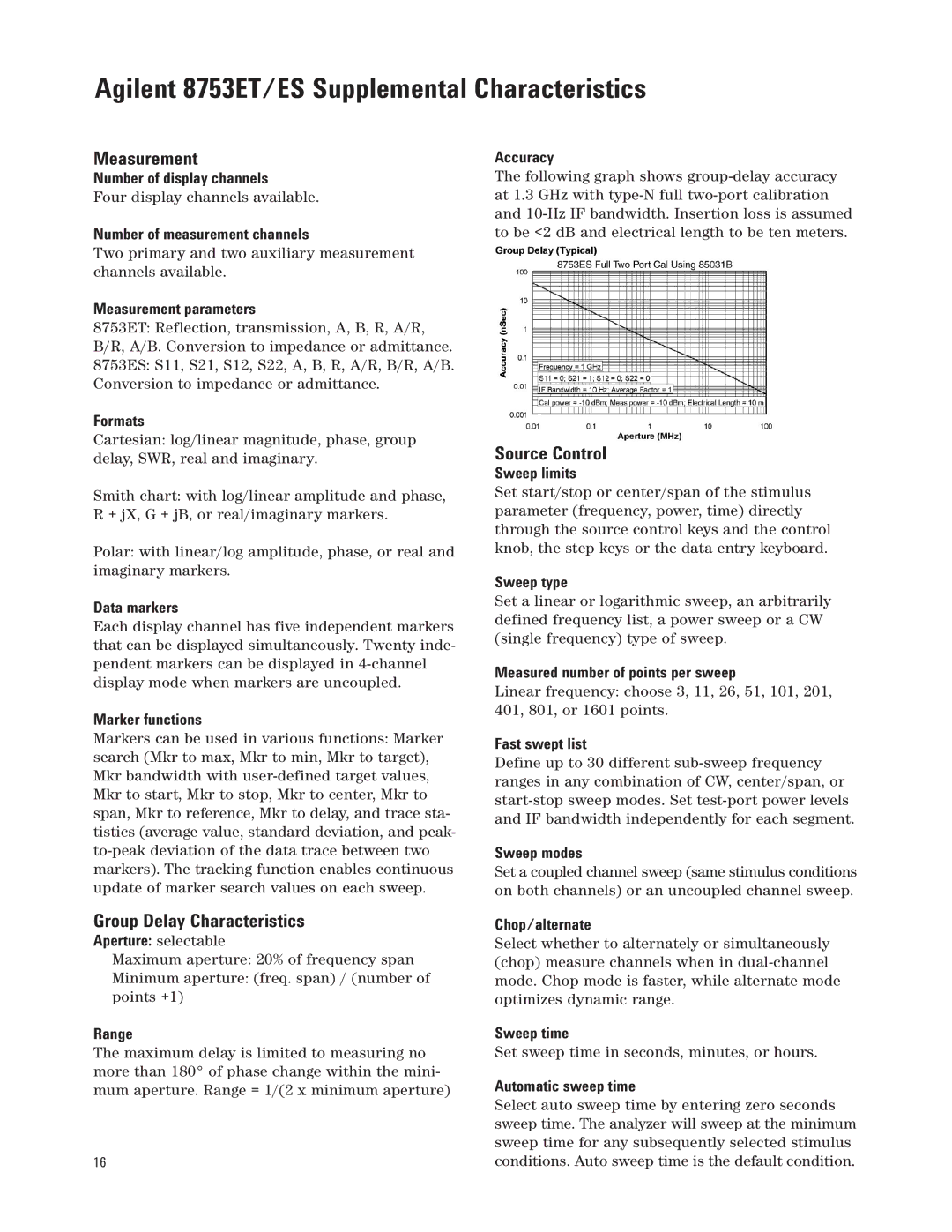
Agilent 8753ET/ES Supplemental Characteristics
Measurement
Number of display channels
Four display channels available.
Number of measurement channels
Two primary and two auxiliary measurement channels available.
Measurement parameters
8753ET: Reflection, transmission, A, B, R, A/R, B/R, A/B. Conversion to impedance or admittance. 8753ES: S11, S21, S12, S22, A, B, R, A/R, B/R, A/B. Conversion to impedance or admittance.
Formats
Cartesian: log/linear magnitude, phase, group delay, SWR, real and imaginary.
Smith chart: with log/linear amplitude and phase, R + jX, G + jB, or real/imaginary markers.
Polar: with linear/log amplitude, phase, or real and imaginary markers.
Data markers
Each display channel has five independent markers that can be displayed simultaneously. Twenty inde- pendent markers can be displayed in
Marker functions
Markers can be used in various functions: Marker search (Mkr to max, Mkr to min, Mkr to target), Mkr bandwidth with
Group Delay Characteristics
Aperture: selectable
Maximum aperture: 20% of frequency span
Minimum aperture: (freq. span) / (number of points +1)
Range
The maximum delay is limited to measuring no more than 180° of phase change within the mini- mum aperture. Range = 1/(2 x minimum aperture)
16
Accuracy
The following graph shows
Source Control
Sweep limits
Set start/stop or center/span of the stimulus parameter (frequency, power, time) directly through the source control keys and the control knob, the step keys or the data entry keyboard.
Sweep type
Set a linear or logarithmic sweep, an arbitrarily defined frequency list, a power sweep or a CW (single frequency) type of sweep.
Measured number of points per sweep
Linear frequency: choose 3, 11, 26, 51, 101, 201, 401, 801, or 1601 points.
Fast swept list
Define up to 30 different
Sweep modes
Set a coupled channel sweep (same stimulus conditions on both channels) or an uncoupled channel sweep.
Chop/alternate
Select whether to alternately or simultaneously (chop) measure channels when in
Sweep time
Set sweep time in seconds, minutes, or hours.
Automatic sweep time
Select auto sweep time by entering zero seconds sweep time. The analyzer will sweep at the minimum sweep time for any subsequently selected stimulus conditions. Auto sweep time is the default condition.
